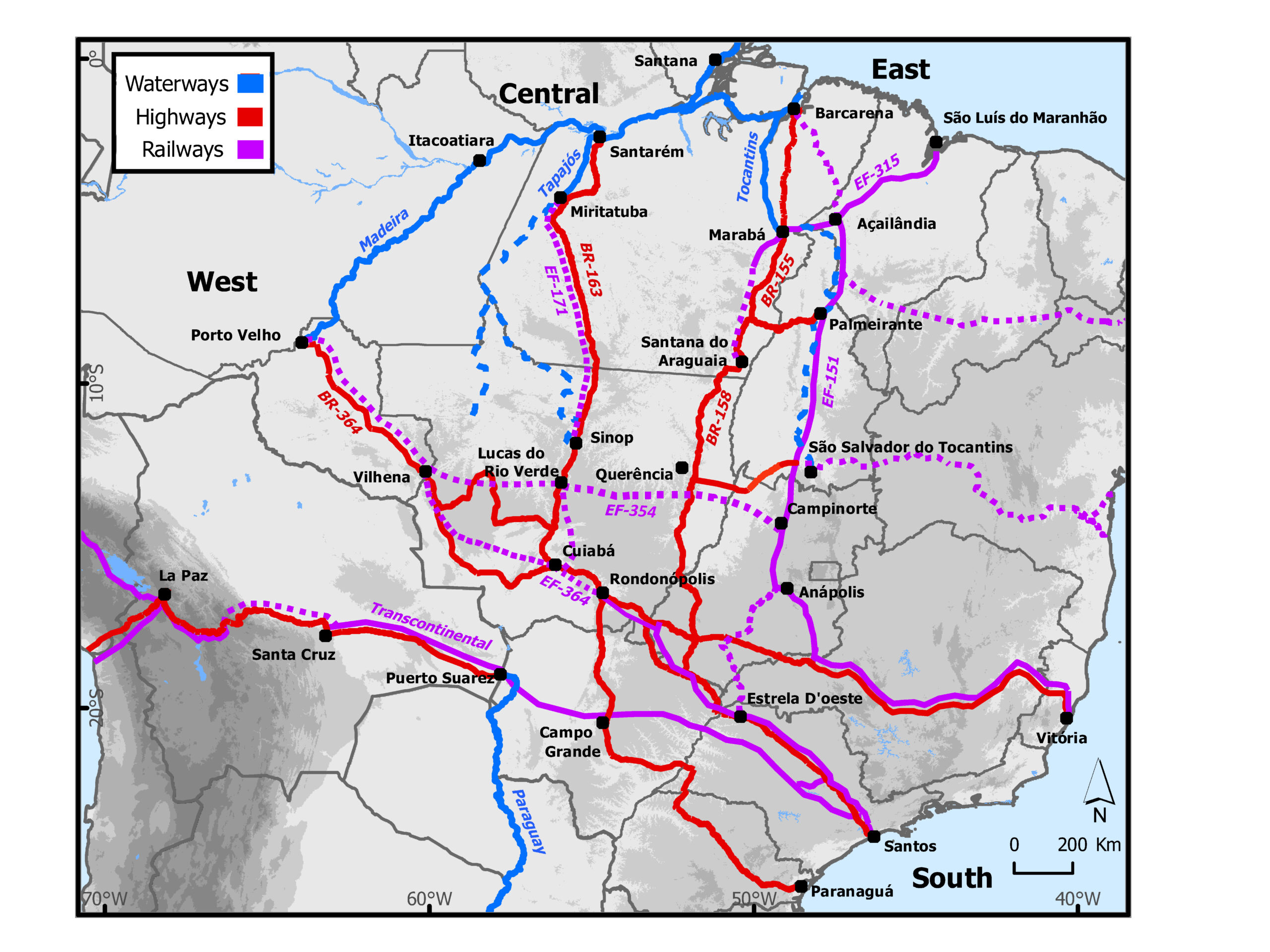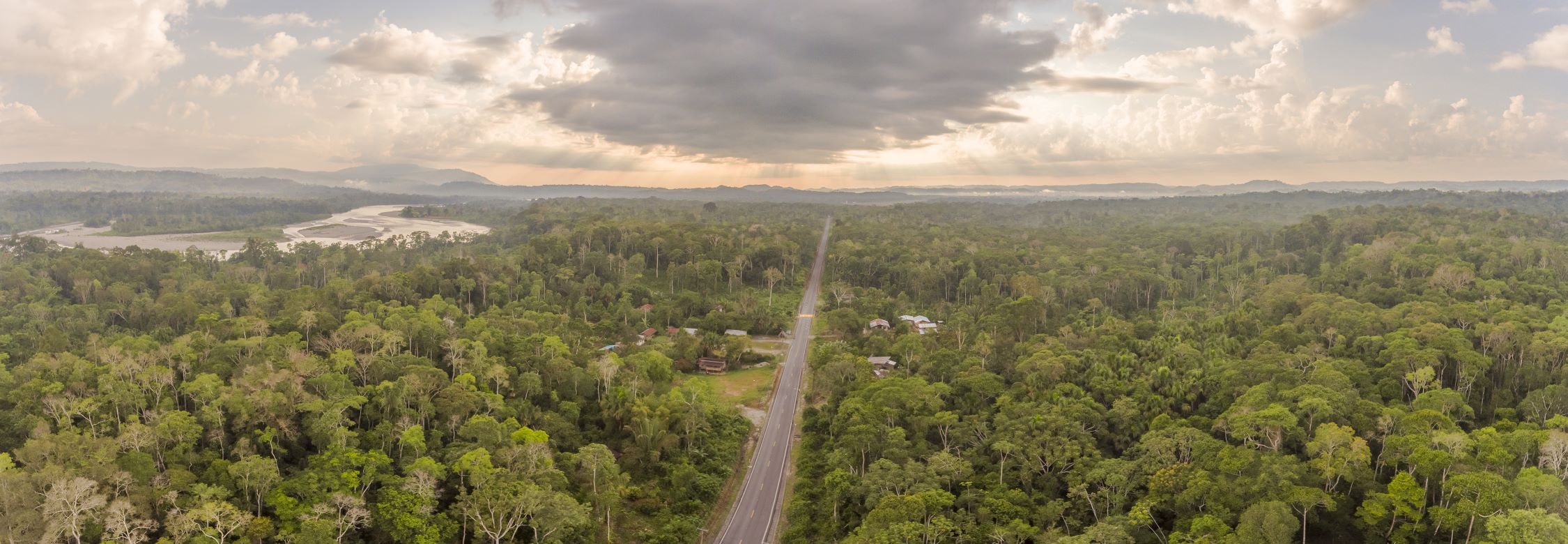- Mongabay has begun publishing a new edition of the book, “A Perfect Storm in the Amazon,” in short installments and in three languages: Spanish, English and Portuguese.
- Author Timothy J. Killeen is an academic and expert who, since the 1980s, has studied the rainforests of Brazil and Bolivia, where he lived for more than 35 years.
- Chronicling the efforts of nine Amazonian countries to curb deforestation, this edition provides an overview of the topics most relevant to the conservation of the region’s biodiversity, ecosystem services and Indigenous cultures, as well as a description of the conventional and sustainable development models that are vying for space within the regional economy.
- Click the “A Perfect Storm in the Amazon” link atop this page to see chapters 1-13 as they are published during 2023.
The modification of the rivers in Brazil has been driven by energy development, but investment in dams has the potential of creating an economically attractive option for shipping Brazil’s farm exports to overseas markets. In the 2019/2020 crop year, Mato Grosso produced 35 million tonnes of soybeans, an increase of about forty per cent over 2015/2016. In 2017, nine per cent was consumed within Mato Grosso, six per cent was shipped to other Brazilian states and the remainder was exported directly to overseas markets, mainly China (66 %) and Europe (12 %).
Soybeans are transported to export terminals by a combination of truck, rail and barge. Producers in Mato Grosso are overly reliant on truck transportation because they operate on frontier landscapes without access to modern rail systems. Until recently, most exported their production via ports in São Paulo and Paraná due to logistical constraints that limited transit to ports on the Amazon River. The need for bulk transport systems has increased over the last decade, not only due to an increase in soy production, but because of a parallel growth in exports of maize, which is increasingly grown in rotation with soybeans.
Truck transportation is inherently inefficient, and the cost of moving grain by truck 2,000 kilometres to the Port of Santos in São Paulo has fluctuated between $US 80 and 120 per ton over the last decade. Farmers in Mato Grosso compete in global markets with producers from other counties with significantly lower transportation costs. In Argentina, the distance is typically less than 400 kilometers, and its legacy railroads provide producers with an efficient transport option; for example, the cost between Cordoba and the port of Rosario is only $US 30 per ton. The distance between producing landscapes and export terminals in the United States is longer, but the US has highly efficient bulk transportation systems, including an extensive rail network and the Mississippi waterway, where the shipping costs from Iowa to New Orleans (2,300 kilometers) is only $US 20 per ton.

Opportunities to lower transportation costs are the most obvious intervention point for improving the competitiveness of Brazil’s soybean exports. Lower transportation costs will enhance profitability for Mato Grosso’s farmers because commodity traders pay producers the international price for their harvest minus the cost of transport and logistics. High transportation costs are essentially a rent that benefits truckers and impedes farmers’ ability to invest in their productive capacity, which explains why agribusiness has made investments in bulk transport systems a national priority.
As the cultivation of soy exploded across the Southern Amazon, the global commodity traders and logistical companies began to invest in transportation systems via the Amazon River. By 2013, approximately thirty per cent of the soy cultivated in central Mato Grosso was exported via Amazonian ports, and by 2017 this proportion had increased to seventy per cent. The shift in transportation patterns has not been due to a reduction in grain shipped via southern ports – that amount has remained relatively constant – but because of increased production within the Amazon.
Amazonian options are organized into three logistical corridors with different multimodal combinations of truck, barge and rail. Simultaneously, the cost competitiveness of the southern option has been improved by the extension of a rail line into southern Mato Grosso that has reduced the truck transport component by 1,400 kilometers.
Producers across central Mato Grosso now have four options for commercialising their production:
- West: Farmers truck their grain via BR-364 to Port Velho, where it is loaded on barges for trans-shipment to Itacoatiara (Amazonas), a port located 75 kilometers east of Manaus, just across the channel from the mouth of Rio Madeira.
- Central: Farmers truck their grain north via BR-163 to Santarem or Miritituba (Pará) on the Rio Tapajós for loading onto barges for trans-shipment to ocean-going ports on the Amazon River.
- East: Farmers can use truck transport (BR-158/155) to to Marabá (Pará) or the recently completed rail line, Ferrovía Norte – Sur (EF-151), both of which connect with the pre-existing rail line, Estrado Ferro Carajás (EF-315), between Marabá and São Luis do Maranhão.
- South: Farmers across the region have the option of trucking their grain to a large logistical complex at Rondonópolis (Mato Grosso) where they can transfer their grain to the Ferrovía Norte (EF-364) for trans-shipment to the grain terminals at Santos (São Paulo).
The expansion of Amazonian ports has improved the profitability of Mato Grosso farmers, but those benefits remain limited by a combination of factors, including a lack of silos and port facilities, poorly maintained roads and, in the case of Porto Velho, an additional 1,000 kilometers of barge transport. The long-awaited completion of BR-163 in 2019 eased some of these constraints and motivated commodity traders and logistic companies to invest in silos and barge-loading facilities at Miritituba, fleets of high-capacity barges and the expansion of the grain terminals at Barcarena and Santana.


Between 2013 and 2017, exports via the three northern corridors represented an annual saving of about $US 100 million when compared to the previous option of trucking production to Santos or Paranaguá (Paraná). The transition from truck to rail for the 1,400 kilometers between Rondonópolis and Santos, however, represented even greater savings of approximately $US 200 million. The transition to rail highlights the potential savings that will accrue as logistical systems continue a transition away from truck transport and toward rail and barge systems. The estimated savings from future investments in bulk transport systems, perhaps as large as $US 1 billion annually, will lower the logistical cost of producers from central Mato Gross to levels that are cost competitive with their global competitors. Not surprisingly, farmers are strong advocates for the construction of railways and the modification of rivers so they can function as commercial waterways.

The Institute of Economic Analysis (IPEA) of Brazil assessed the comparative costs and benefits of waterways when compared to railroads. Based on a standard unit of 1,000 kilometers, a projected lifespan of 25 years, and an average transport of 10 million tonnes of goods per year, fluvial transportation was estimated to be about 35 per cent less expensive when compared to railways.
This estimate excluded capital investment in dams, however, which are essential components on all Brazilian waterways; for this reason, the construction of hydropower assets constitutes a massive subsidy. The IPEA included neither the cost of the environmental damage that this type of infrastructure would inflict on the Amazon ecosystem, including modifications to the hydrology of its river systems, nor the increased deforestation that might be stimulated by the expansion of agriculture.
“A Perfect Storm in the Amazon” is a book by Timothy Killeen and contains the author’s viewpoints and analysis. The second edition was published by The White Horse in 2021, under the terms of a Creative Commons license (CC BY 4.0 license).
Read the other excerpted portions of chapter 2 here:
Chapter 2. Infrastructure defines the future
- Infrastructure defines the future July 19, 2023
- Roads are primary vectors of deforestation in the Pan Amazon July 20, 2023
- The Human-Modified Landscapes (HML) and the Brazilian highway network July 26, 2023
- The Andean republics of the Pan Amazon July 26, 2023
- Infrastructure in the Andean Amazon: The Carretera Marginal de la Selva August 1, 2023
- Infrastructure in the Pan Amazon: The Guiana Shield and the Coastal Plain August 3, 2023
- Hydropower in the Pan Amazon: A shift toward reduced impact facilities, but the controversy continues August 9, 2023
- Hydropower in the Pan Amazon: The Guri complex and the Caroni Cascade August 11, 2023
- Hydropower in the Pan Amazon: Tucuruí and the Tocantins Cascade August 16, 2023
- Hydropower in the Pan Amazon: The Madeira Hydropower Complex August 17, 2023
- Hydropower in the Pan Amazon: Belo Monte and the Río Xingu August 24, 2023
- Hydropower in the Pan Amazon: The Tapajós Basin and the prevalence of Indigenous rights August 25, 2023
- Hydropower in the Pan Amazon: Río Trombetas and Calha Norte August 29, 2023
- Hydropower in the Pan Amazon: Bolivia seeks an energy export model August 30, 2023
- Hydropower in the Pan Amazon: A look at the private energy sector in Peru September 5, 2023
- Hydropower in the Pan Amazon: An overview of the private energy sector in Ecuador and China’s role September 6, 2023
- The future of hydropower in the Pan Amazon September 12, 2023
- In the Amazon, global competition drives bulk transport systems September 13, 2023
- Infrastructure in the Pan Amazon: Waterway options September 20, 2023
- Infrastructure in the Pan Amazon: Railroad development September 21, 2023
- Infrastructure in the Pan Amazon – Finance: What is new and what is not September 26, 2023
- Infrastructure in the Pan Amazon: Public-private partnerships September 27, 2023
- Investing in the Pan Amazon: How China’s investment operates October 4, 2023

